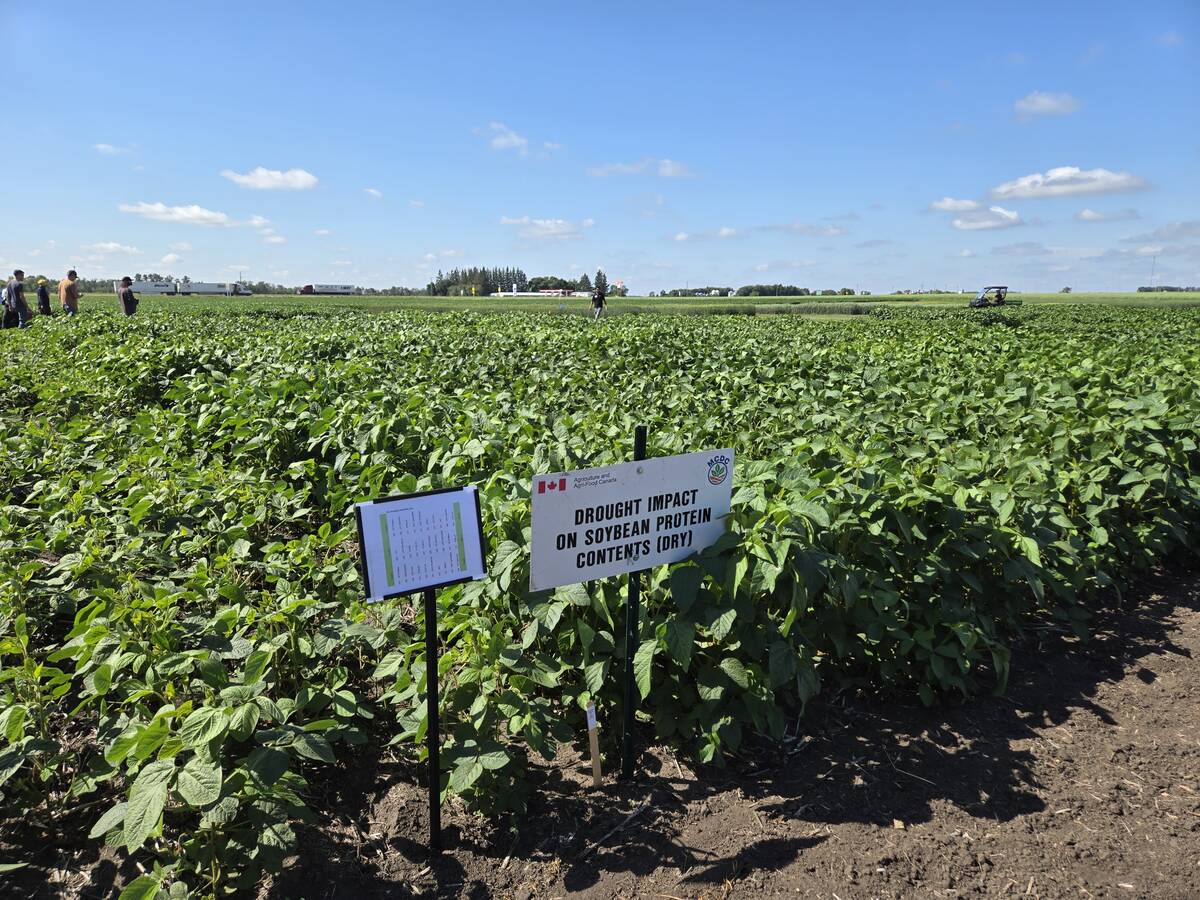We all knew it was coming sooner or later – the next phase of genetically modified organisms.
AquaAdvantage salmon and Enviropig are both under review by Health Canada. They represent two candidates that could become the first GM animals approved for human food.
But the stakes reach far beyond fish and swine.
In the United States, the Food and Drug Administration has moved its approval for AquaAdvantage into the public hearing stage. If approved, it could be on public tables in 18 months.
Read Also

Carberry field day looks for agriculture solutions
Manitoba farmers explored research solutions for resilient crops, perpetual agronomic issues and new kinds of agricultural products at a field day at the Manitoba Crop Diversification Centre in Carberry on Aug. 6.
The fish is the result of a process that injects North Atlantic salmon eggs with a growth hormone gene from a Chinook salmon and DNA from an eel-like creature called an ocean pout. The fish grows to market size in about half the time as conventional salmon, making it cheaper to produce on less feed.
Approval of Enviropig appears to be further off, although scientific data on it were submitted to American regulators for use in human food in 2007, and similar data were submitted to Canadian authorities in 2009.
The pigs contain genetic material from mice and E. coli bacteria that allow them to digest more phosphorus in their feed, which lowers the phosphorus content of the pigs’ manure.
Phosphorus runoff into lakes, ponds and other waterways has been identified as a key pollution concern in some areas, especially where there is a high density of hog barns.
But many questions have yet to be answered before many of us will accept these animals as a normal part of our daily meals. Most important is whether they are safe to eat.
There are fears about unproven, long-term effects on human health, since GM animals are substantially different from their plant predecessors.
Even if science is able to resolve those concerns – and it is on the way to doing so, having gotten this far along in the regulatory process – is the public ready?
We have seen emotions over GM trump science in the past, especially among European consumers.
The lessons are there. By introducing AquaAdvantage salmon, are we threatening all salmon markets, GM and conventional?
Organizations such as Greenpeace think so. It and other environmental groups also think the GM fish would threaten natural fish stocks and they aren’t convinced by protections offered by AquaAdvantage developer, AquaBounty, which says it uses only sterile females in closed systems so the fish can’t escape or breed.
These are concerns that regulators need to address before proceeding. Clearly, public acceptance will take time. There is a sizable ‘ick’ factor here and developers may have to be patient and let public education work its magic.
We also have to be careful that we keep an open mind lest the potential rewards that new ideas might bring pass us by. If products are rejected for emotional reasons, it could throw a chill on research and spoil promising ideas before they have a chance to move beyond the laboratory notebook.
There are 6.8 billion people in the world today with a population of nine billion predicted by 2050.
We will have to find new food sources, that much is certain. Do we burn more forests to make way for crops? Do we send out more fishing trawlers and boost the harvest of already stressed ocean stocks?
In the end, we must choose whether to act out of fear or act out of hope.
It is vital we take all precautions to preserve the world’s ecosystems, but ignoring our best hope for a way out of the population dilemma presents more dangers to humankind and the environment than does making use of careful, sound science.
Bruce Dyck, Terry Fries, Barb Glen and D’Arce McMillan collaborate in the writing of Western Producer editorials.














